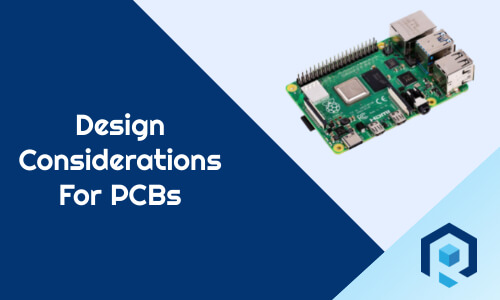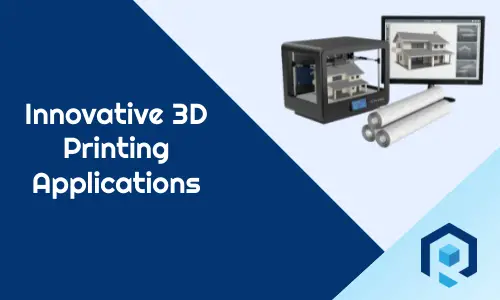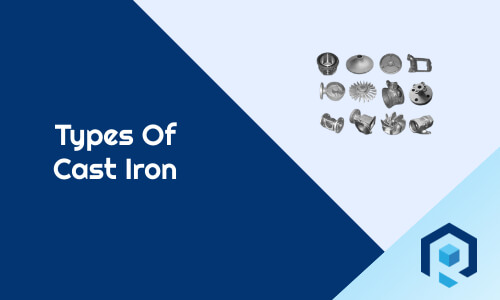Nowadays, some production parts are manufactured using 3D printing technology, which is a Rapid Prototyping technique. Rapid Prototyping already replaced many traditional manufacturing processes and going to evolve more soon. Let’s explore more about Rapid Prototyping, the definition of Rapid Prototyping, methods, and advantages.
What is Rapid Prototyping: Rapid Prototyping Definition
Rapid Prototyping is a group of techniques used to fabricate a replica of parts or assemblies using a 3D CAD ( computer-aided design) model. Rapid Prototyping uses 3D printing or additive layer manufacturing to fabricate a part.
Rapid prototyping offers high-fidelity prototypes which means the prototype is almost similar to the actual part. That is the sole reason that it is replacing much traditional manufacturing
![What Is Rapid Prototyping: Definition, Methods And Advantages[PDF] 1 rapid prototyping](https://www.riansclub.com/wp-content/uploads/2020/08/Rapid-Prototyping1-1024x724.png)
History of Rapid Prototyping
Rapid prototyping was introduced in 1987 with the introduction of stereolithography technology followed by Selective layer sintering, Fused deposition modeling, and Laminated object manufacturing. The first commercial 3D rapid prototyping based on Fusion disposition modeling was introduced in April 1992.
You may like to read: What is just in time manufacturing
What Is .Stl file format?
.STL is an abbreviation of the word “STereoLithography” and often referred to as ” Standard Triangle Language”. This is a neutral file format which converts 3D CAD models to Triangle Facets based models. So if you look carefully, you will see millions of small triangles joined together in a .stl file. The smaller those triangles, the more accurate the part will be when it is given to manufacturing. .STL file is used exclusively for 3D printing.
![What Is Rapid Prototyping: Definition, Methods And Advantages[PDF] 2 rapid prototyping](https://www.riansclub.com/wp-content/uploads/2020/08/The_differences_between_CAD_and_STL_Models.svg_.png)
How Rapid Prototyping Works: Rapid Prototyping Process
Rapid prototyping process or 3D printing is an additive layer manufacturing process. A different layer of materials is joined together to get the desired shape of the part. 3D printing methodology is purely based on the 3D CAD ( Computer-Aided Design) data. Once the 3D CAD model is ready, it is converted into .stl format. The .stl file is then sent to the Rapid prototyping lab, where they feed the .stl file into the Rapid prototyping system.
The software in the 3D printing machine can read the STL file and based on those small triangles or layers, the machine starts laying off layers of materials, liquid or sheet materials. Those layers are then bonded together. The bonding agent should already present in the material composition. Once all layers are bonded together, it gets the shape of the .stl 3D CAD file.
One thing you may notice that all 3D printing models do to get a good surface finish, the reason is that the model is actually a set of layers bonded together. You will always see some fine lines of the layer in 3D printed parts.
It takes about an hour to make small 3D printed parts but it may even take a week for complex parts. It all depends on the part complexity and machine capacity. So in a nutshell below are the steps involved in a 3D printing process flow.
- Create a 3D CAD model
- Export 3D CAD model to.STL file format
- Feed the. STL file into the 3D printing system
- 3D printer lays of layers of materials
- Materials are bonded together using adhesives
- The part gets the desired shape
- Allow the part to cool down.
Rapid Prototyping Materials
Typical materials include different polymers like polystyrene (PS), polycarbonate (PC), polyamides, thermoplastic elastomers, etc. In fact, any Semi-crystalline polymers work great with rapid prototyping due to good sintering properties. Other polymers like ABS, nylon, Polyethelene, rubber is also widely used.
In the case of metal rapid prototyping, metals like stainless steel, aluminum, and titanium are used for a variety of applications. This material list is not exclusive, due to the evolution of rapid prototyping technology, new materials are getting used very often.
Types Of Rapid Prototyping Methods
The list mentioned below for types of Rapid Prototyping methods is not exclusive. As I said in this article earlier that the Rapid Prototyping technology is evolving and many types are getting explored every day. So including all those types are out of the scope of this article. Below are a couple of well-known types of Rapid Prototyping.
- Stereolithography ( SLA)
- Selective laser melting ( SLM)
- Fused deposition modeling ( FDM)
- Laminated object manufacturing
- Selective laser sintering ( SLS)
- Binder Jetting
StereoLithography ( SLA)
Stereolithography is a 3D printing process in which layers of materials are stacked using a photochemical process. The photochemical process uses ultraviolet light to bond many monomers into polymers. That polymer takes the shape of the actual part when cooled.
Stereolithography uses a photochemical resin. Ultraviolet laser lights are emitted to those resin having the shape of individual layers. Since those resins are sensitive to ultraviolet lights, those resign gets bonded photo-chemically. This process needs to be followed for each layer until the desired shape is achieved.
![What Is Rapid Prototyping: Definition, Methods And Advantages[PDF] 3 rapid prototyping](https://www.riansclub.com/wp-content/uploads/2020/08/stereolithography.png)
Credit: Wikipedia
Selective Laser Melting ( SLM)
Selective Laser Melting uses a high-power laser to melt the metal powder and fuse those molten metal powder together. It is also considered as a subcategory of selective layer sintering.
SLM can make exact production parts with complex shapes. Since SLM builds the prototype by staking layer by layer, so you can get complex internal features in prototypes. Those kinds of internal features are not possible in casting or molding and even if it’s possible you may need side cores which add cost.
![What Is Rapid Prototyping: Definition, Methods And Advantages[PDF] 4 Rapid prototyping](https://www.riansclub.com/wp-content/uploads/2020/04/Selective_laser_melting_system_schematic.jpg)
Fused Deposition Modelling ( FDM )
Fused Deposition modeling often referred to as Fused Filament Fabrication. In this process, the system uses a filament of thermoplastic materials. The filament is fed from a large coil through a moving extruder head and is deposited into the growing work. The print head moves based on the input from the computer.
It usually moves in the X and Y direction to get the shape of an object and moves in the Z direction to create a layer. Like these multiple layers are created by the filament and then joined together to get the desired shape.
![What Is Rapid Prototyping: Definition, Methods And Advantages[PDF] 5 rapid prototyping](https://www.riansclub.com/wp-content/uploads/2020/04/3D_Printer_Extruder.png)
Laminated Object Manufacturing ( LOM)
In Laminated Object Manufacturing, layers of adhesive-coated paper, plastic, or metals laminated on top of each other to create a shape. After that, it gets cut by a laser or manually to get the desired shape. Sometimes parts printed using this method need additional machining to get the best result.
![What Is Rapid Prototyping: Definition, Methods And Advantages[PDF] 6 rapid prototyping](https://www.riansclub.com/wp-content/uploads/2020/04/800px-Laminated_object_manufacturing.png)
Credit : Wikipedia
Selective Laser Sintering (SLS)
Selective Laser Sintering is almost the same as Selective layer melting. The only difference is that in Selective Layer Sintering, metal powders are sintered rather than melted as in the case with Selective layer Melting. Since the material is melted in SLM so the mechanical properties of the print get degraded whereas in SLS there is no such issue as metal powders get sintering.
Binder Jetting
Binder jetting use a powder bed on which droplets of liquid adhesive is sprayed. The movement of the droplet is controlled as per the data feed. Due to liquid additives, those powder materials get bonded together taking the shapes of the finished product.
Application Of Rapid Prototyping
Rapid prototyping can come handy in following cases.
- Concept Validation
- Functional Prototype
- Production Parts
Concept Validation
Concepts are nowadays gets designed using 3D CAD software. To validate if that concept will work or not, we need to get it printed and check for form, fit, and function. Without 3D printing, you would need to get this design tooled and then get the part which adds a huge amount of expense. Rapid prototyping helps to save the concept validation cost by simply getting the part printed in just an hour with no tooling.
Functional Prototype
Some of you may need to do some trial runs with your designed parts which are not yet ready for production. But making a prototype that is as good as the production part is not at all a cheap affair. Rapid prototyping helps here by making almost all production parts like rapid prototypes for your functional trial runs.
Production Parts
You will be surprised to know that Rapid Prototyping nowadays used for production parts also. Though higher scale production is not done many parts of aircraft are nowadays manufactured using Rapid Prototyping or 3D printing. The reason is simple, 3D printing can print any complex shapes without adding any extra cost.
Benefits of Rapid Prototyping
Here are some of the key benefits of Rapid Prototyping
- Can manufacture complex parts easily
- No separate tooling required to print a part
- Gives almost the same part as a production part
- Wide variety of materials to choose from
- No need to do tooling for the concept part or research study parts
- Part can be printed very quickly compared to the regular production part
- Making functional prototypes is very easy and cost-effective
- The overall product cost gets reduced
Drawbacks of Rapid Prototyping
Here are some of the disadvantages of using rapid Prototyping. Although those can be ignored when rapid prototyping is used in mass scale
- Can not match the structural quality of the production part
- The part finish is not as good as the production part
- Data loss during the conversion from the 3D CAD model to STL file
- The initial setup cost is very high
- A very high skilled technician is needed to run the machine
Conclusion
Trust me, Rapid Prototyping is the future. With the speed at which this technology is evolving, the day is not so far when most of the traditional manufacturing will be replaced by 3D printing. The trend is already started by some automotive and aircraft manufacturers. Although Rapid Prototyping has its own set of a drawback but considering the cost point of view, its a game-changer.
Rapid Prototyping is a very broad topic. I just tried to give an overview of this topic. Writing about each and every Rapid prototyping type of surely out of scope. In fact, you can start a blog only on Rapid Prototyping. I understand that you may have a lot of questions. Please pen down those in the comment section and I will be happy to answer.
Frequently Asked Questions ( FAQ )
What is Rapid Prototyping?
Rapid Prototyping is a group of techniques used to fabricate apart from the 3D CAD model often using 3D printing or additive layer manufacturing.
What are those common types of Rapid prototyping technique?
Stereolithography
Additive layer melting
Additive layer sintering
Fuse deposition manufacturing
Laminated object manufacturing
What 3D CAD file type is used in 3D printing?
.STL file format
What is a .stl file format?
.STL file is a neutral file format that gets used in 3D Printing. It converts 3D CAD models into an array of millions of triangular facets.
What materials can we used in Rapid Prototyping?
Any semi crystalline polymers and metals like stainless steel and aluminium are popular for Rapid Prototyping



